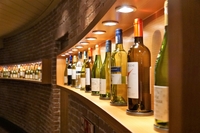Archives
October 2020
August 2020
June 2020
April 2020
January 2020
August 2019
July 2019
May 2019
August 2018
July 2018
May 2018
March 2018
November 2017
August 2017
February 2017
September 2016
January 2015
September 2014
July 2014
June 2014
May 2014
October 2013
July 2013
June 2013
May 2013
April 2013
March 2013
February 2013
January 2013
December 2012
November 2012
September 2012
August 2012
May 2012
April 2012
22 August 2017
Wine Ageing - A Brief Guide

Better with age?
We’ve all heard the saying “...like a fine wine it gets better with age”, but how does this work? Well there is a science to this. Wine is perishable and time affects it in the way that it can deteriorate, however complex chemical reactions within the wine will change the makeup of the sugar acid and phenolic compounds can alter aroma, colour, mouthfeel, and the flavour of the wines. This can be more pleasing to the consumer. This is only true for some varieties of wine however, not all are suitable for the ageing process. Italian Wine is no exception to this either.
How do we know if a wine can age or not?
Whether a wine can age is decided by many varying factors, for instance, grape variety, vintage, vehicularly practices, wine region, as well as winemaking style. The conditions of the bottling also make a big impact on this, it can require significant time, as well as financial investment – so wine is made with aging in mind.
The chemistry of wine aging is modern in comparison to the practice, most of wine is not aged, meant to be consumed within 1 to five years of production.
Storage
This is a big influencer on how the wine ages, vibrations as well as heat changes can have an adverse effect on wines. A cool and consistent environment is preferable.
Bottle
Short term wine aging has a term known as ‘sick’ wine. During the bottling period, if wine is exposed to oxygen it can cause chemical reactions within the wine.
Dumb Phase
Over the ageing period, wine could slip into a dumb phase, in this time aromas and flavours are muted. This is likened to a teenager going to adolescence. Following this the flavour will then change to its desired, aged form.
Results
The harsh bite of tannins of youth gradually give way to a softer mouthfeel. The colour will begin to appear orange around the edges before turning brown.
Artificial ageing.
Instigating changes of wine ageing without the required time has been a practice which has been developed for a long period of time. Amphora was them placed in the chamber which itself was location atop a hearth fire. This imbues the wine with a smoky flavour, sharpening the acidity.